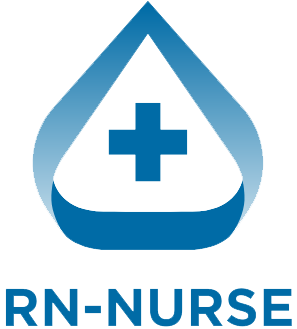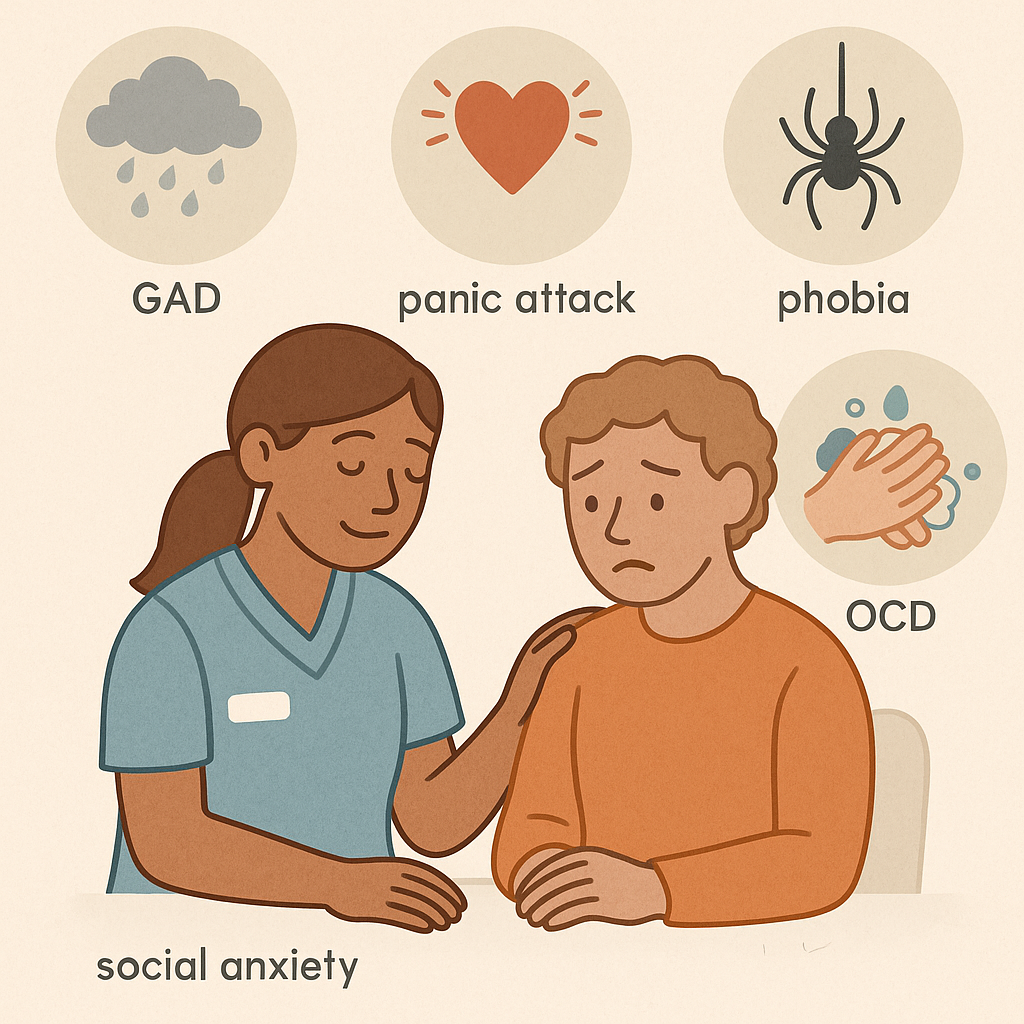Anxiety disorders are some of the most common mental health conditions that every nurse should understand. Whether you’re preparing for the NCLEX, building your nursing bundle, or practicing as an RN nurse, knowing how to recognize and care for anxiety helps you support patients effectively.
🧠 What Are Anxiety Disorders?
Anxiety is more than everyday stress. It’s intense, persistent worry or fear that can interfere with daily life. Patients may feel overwhelmed, restless, or unable to focus. As a registered nurse, you’ll often see anxiety in hospital and clinic settings.
📌 Common Types of Anxiety Disorders
Let’s break down the most common anxiety disorders you should know for NCLEX and daily nursing practice:
1️⃣ Generalized Anxiety Disorder (GAD)
GAD means chronic, excessive worry about many things — work, health, family — for at least six months.
Signs:
- Restlessness
- Muscle tension
- Trouble sleeping
- Fatigue
- Difficulty concentrating
Nursing tip: Encourage patients to share worries and use relaxation techniques.
2️⃣ Panic Disorder and Panic Attacks
Panic disorder involves sudden, intense episodes of fear — called panic attacks.
Signs of a panic attack:
- Heart racing
- Shortness of breath
- Chest pain
- Feeling like dying or losing control
Attacks peak within minutes and often happen without warning.
RN nurse tip: Stay calm, speak slowly, and help the patient control breathing.
3️⃣ Phobias
A phobia is an unreasonable fear of an object or situation — like flying, heights, or needles.
Patients may avoid triggers, which can affect their daily life.
Nursing care: Don’t force exposure. Offer support and refer for therapy if needed.
4️⃣ Social Anxiety Disorder
This is a strong fear of being judged or embarrassed in social situations.
Signs:
- Avoiding groups or speaking in public
- Blushing, sweating, trembling when meeting new people
NCLEX tip: Support gradual exposure therapy and relaxation strategies.
5️⃣ Obsessive-Compulsive Disorder (OCD)
OCD often appears alongside anxiety. Patients have:
- Obsessions: Unwanted thoughts (e.g., fear of germs)
- Compulsions: Repetitive actions (e.g., excessive handwashing)
Nursing care: Encourage medication adherence and therapy. Never criticize rituals.
🩺 How Nurses Assess Anxiety
Every registered nurse should know how to spot anxiety symptoms and document them properly:
- Ask how long symptoms have lasted.
- Note physical signs: fast pulse, sweating, restlessness.
- Ask about impact on daily life and sleep.
- Screen for suicidal thoughts if anxiety is severe.
Use clear language and keep a calm, reassuring tone.
✅ Nursing Interventions for Anxiety
As an RN nurse, your goal is to help patients feel safe and supported.
Key nursing actions:
- Stay calm and present.
- Teach breathing exercises and grounding techniques.
- Reduce environmental stress (quiet room, dim lights).
- Encourage medication compliance (SSRIs, anti-anxiety meds).
- Involve family or support systems if appropriate.
🎓 NCLEX and Nursing Bundle Tips
👉 For NCLEX:
- Know differences between GAD and panic disorder.
- Always focus on patient safety first.
- Choose interventions that reduce fear and promote calm.
Your nursing bundle should include practice questions about anxiety signs, medications, and therapeutic communication.
🗝️ Key Takeaway
Anxiety disorders can deeply affect patients’ lives. By understanding the types, symptoms, and best nursing actions, every nurse can provide better mental health care — and pass the NCLEX with confidence!

